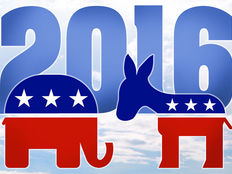
The 2016 presidential race has narrowed down to Democratic candidate Hillary Clinton and Republican candidate Donald Trump. With November’s election nearing, the candidates have begun outlining their plans for the economy to voters. These plans could have a significant impact on the future of the municipal bond market, which relies heavily on tax incentives to finance state and local government infrastructure projects.
In this article, we will take a look at Clinton’s and Trump’s proposed changes to taxation and what these changes could mean for the muni bond market.
Trump's Plan
Trump’s plan aims to simplify the tax code by cutting taxes for the middle class and reducing the number of tax brackets from seven to four, according to his campaign website. Tax deductions would also be phased out for higher earners with the 25% tax bracket keeping less than half of their current deductions. In addition, he proposed eliminating the death tax, marriage penalty, and the alternative minimum tax, or AMT.
The Tax Foundation, a nonprofit think tank, estimates that the plan would reduce tax revenue by $10.14 trillion and increase the deficit by more than $10 trillion over the next decade, but it would also increase gross domestic product by 11%, create 5.3 million new full-time jobs, and “greatly increase” the size of the economy over the long run. Trump’s proposed lower corporate tax rate of 15% would likely help America become much more competitive for businesses.
These tax changes could have a profound impact on the municipal bond markets, since they would remove many of the incentives for buying muni bonds. High-net-worth individuals are among the biggest holders of muni bonds because they offer the greatest tax benefit to those in the highest tax brackets. Fewer muni bond buyers could lead to increased debt service costs to local and state governments at the same time that federal spending cuts are being enacted.
Clinton's Plan
Clinton’s tax plan would raise taxes for the highest earners with the top 1% of households paying more for over three-fourths of tax increases. In particular, the so-called “Buffett Rule” would establish a 30% minimum tax on taxpayers with adjusted gross income of over $1 million and would phase in between $1 million and $2 million. Itemized deductions would also be capped at a tax value of 28%, which would limit options for high earners to deduct expenses.
The Tax Foundation believes that the plan would raise $1.1 trillion in tax revenue over the next decade, but would effectively reduce gross domestic product by 1% due to higher tax rates on capital and labor income. In addition, the move could reduce capital investment by 2.8%, reduce wages by 0.8%, and eliminate roughly 311,000 full-time jobs. However, the plan doesn’t account for any changes to government spending that may accompany the tax plan.
The municipal bond market would likely benefit from Clinton’s tax plan since it increases taxes for the nation’s top earners. In general, tax-exempt bonds, like muni bonds, tend to benefit the most when tax rates increase because taxpayers are incentivized to buy them. The upshot is that the increased interest in muni bonds could further lower borrowing costs for state and local governments and ultimately boost infrastructure spending.
The Bottom Line
Hillary Clinton and Donald Trump appear to be the front-runners in the upcoming presidential elections. After unveiling their tax plans, it seems that Trump’s plan could hurt municipal bonds by lowering taxes, while Clinton’s plan could benefit muni bonds by raising taxes for the highest earners. These dynamics could lower infrastructure spending under Trump and increase infrastructure spending under Clinton via changes in bond yields.
Muni bond investors should keep these factors in mind when analyzing the outcome of the November 2016 elections, although it’s unlikely that any tax changes will be implemented by January for the upcoming year.






